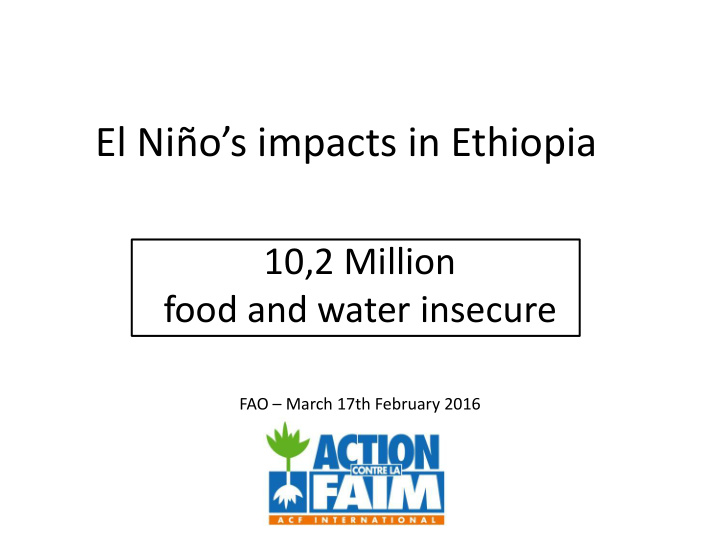



El Niño’s impacts in Ethiopia 10,2 Million food and water insecure FAO – March 17th February 2016
Water point in Wag Himra zone of Amhara Region of Ethiopia
“My husband is a farmer. Last year we sowed our crops but due to lack of rainfall the land did not produce anything” Elfu Zahaiyu - in Sana’a Kebele
“There was not enough food in my house due to the drought during my pregnancy. At one point, I was severely malnourished, I felt so bad that I thought I was going to die .” Malu Gabrua - in Sana’a Kebele
“Our only source of food is the ration we receive from the government” Tangey Talando – in Lalkiyu Kebele
“We are trying our best to cope with this drought but our water source is getting far and we have to travel for so many hours; also the burden in my home is very high. We are trying to survive as much as possible .” Kasa Masrun – in Taba’a Kebele
“I am a farmer. I used to grow beans, wheat, tef among other crops. Now there is nothing at home .” Haftubi Satai - in Taba’a Kebele
EL NINO: WHICH PRIORITIES FOR ACTION ? We need more funds We need greater urgency We need a political leadership We need comprehensive solutions
No disaster becomes a crisis if we are prepared enough and if the response is efficient ! States committed to end poverty, hunger and water insecurity in SDG 1, 2 and 6 last September. Funds must be allocated quickly to adapt to climate change and its adverse effect in accordance with Paris agreement
Recommend
More recommend